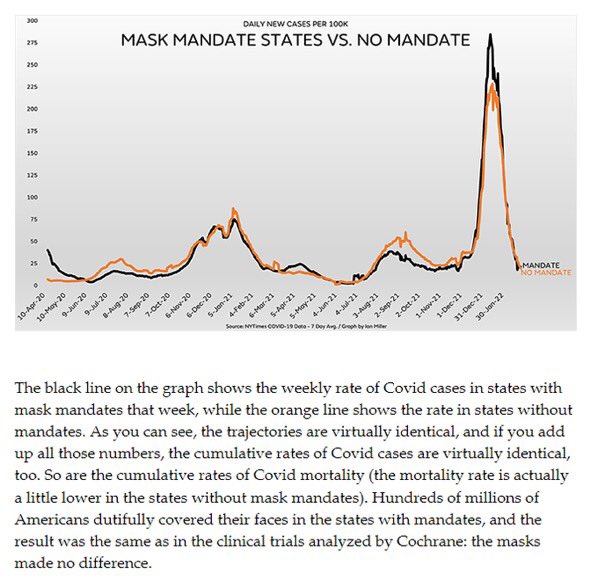Doctors often claim that measles is making a comeback because of "antivaxers".
So I plotted measles cases as a ten-year rolling average using CDC data.
And I found that measles is actually not making a comeback.
These "doctors" and "experts" are simply lying to everyone.
So I plotted measles cases as a ten-year rolling average using CDC data.
And I found that measles is actually not making a comeback.
These "doctors" and "experts" are simply lying to everyone.

It's true that there have always been sporadic outbreaks.
And after the "golden period" of about 5 years in the 2000s when there were only about 80 cases per year, we're up to about 240 cases per year now.
And after the "golden period" of about 5 years in the 2000s when there were only about 80 cases per year, we're up to about 240 cases per year now.

But historically speaking, the 2016-2025 10-year period is the second-lowest for measles cases in American history, second only to 2006-2015.
In the 1990s, there were ~8000 cases per year.
But that's not all.
In the 1990s, there were ~8000 cases per year.
But that's not all.
There were actually the same number of deaths in 2016-2025 as in the previous ten-year period 2006-2015: one.
Yes, that's right, during 2006-2015, there was one death. During 2016-2025, there is also one death.
Both ten year periods were record lows in number of measles deaths.
Yes, that's right, during 2006-2015, there was one death. During 2016-2025, there is also one death.
Both ten year periods were record lows in number of measles deaths.
Imagine: children have been more safe from dying from measles over the past twenty years than at any time in American history.
Meanwhile doctors are saying measles is making a comeback.
The data show that these "doctors" simply don't know what the hell they are talking about.
Meanwhile doctors are saying measles is making a comeback.
The data show that these "doctors" simply don't know what the hell they are talking about.
For transparency's and discussion's sake, I am pasting all of the rolling 10-year averages since 1960.
1960,560991.1
1961,550371.2
1962,530216.5
1963,523817.5
1964,501353.8
1965,472028.6
1966,431248.6
1967,388839.2
1968,314752.9
1969,276719.3
1970,237284.1
1971,202421.2
1972,157495.7
1973,121649.1
1974,78050.2
1975,54297.2
1976,37996.2
1977,37460.2
1978,37924.2
1979,36701.3
1980,33316.8
1981,26100.2
1982,23044.1
1983,20524.8
1984,18574.1
1985,16418.9
1986,12934.5
1987,7565.5
1988,5218.0
1989,5677.6
1990,7105.6
1991,7757.5
1992,7809.8
1993,7691.3
1994,7528.9
1995,7277.6
1996,6700.2
1997,6348.5
1998,6014.5
1999,4205.2
2000,1435.2
2001,482.5
2002,263.2
2003,237.6
2004,145.0
2005,120.7
2006,75.4
2007,65.9
2008,74.3
2009,71.4
2010,69.1
2011,79.5
2012,80.6
2013,93.7
2014,156.7
2015,168.9
2016,172.0
2017,179.7
2018,203.2
2019,323.5
2020,318.5
2021,301.4
2022,308.0
2023,295.2
2024,257.0
2025,247.5
1960,560991.1
1961,550371.2
1962,530216.5
1963,523817.5
1964,501353.8
1965,472028.6
1966,431248.6
1967,388839.2
1968,314752.9
1969,276719.3
1970,237284.1
1971,202421.2
1972,157495.7
1973,121649.1
1974,78050.2
1975,54297.2
1976,37996.2
1977,37460.2
1978,37924.2
1979,36701.3
1980,33316.8
1981,26100.2
1982,23044.1
1983,20524.8
1984,18574.1
1985,16418.9
1986,12934.5
1987,7565.5
1988,5218.0
1989,5677.6
1990,7105.6
1991,7757.5
1992,7809.8
1993,7691.3
1994,7528.9
1995,7277.6
1996,6700.2
1997,6348.5
1998,6014.5
1999,4205.2
2000,1435.2
2001,482.5
2002,263.2
2003,237.6
2004,145.0
2005,120.7
2006,75.4
2007,65.9
2008,74.3
2009,71.4
2010,69.1
2011,79.5
2012,80.6
2013,93.7
2014,156.7
2015,168.9
2016,172.0
2017,179.7
2018,203.2
2019,323.5
2020,318.5
2021,301.4
2022,308.0
2023,295.2
2024,257.0
2025,247.5
• • •
Missing some Tweet in this thread? You can try to
force a refresh












